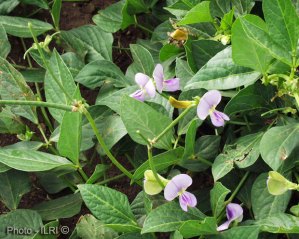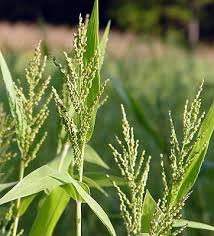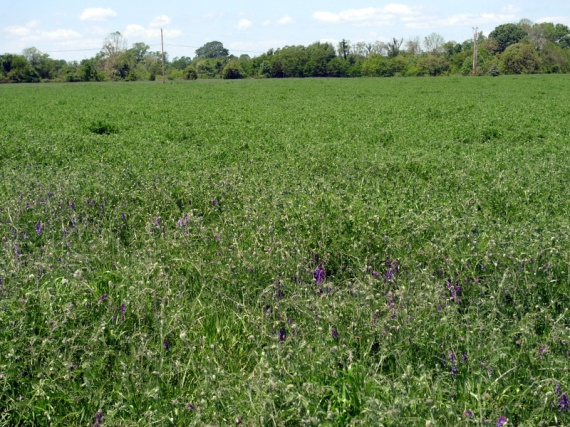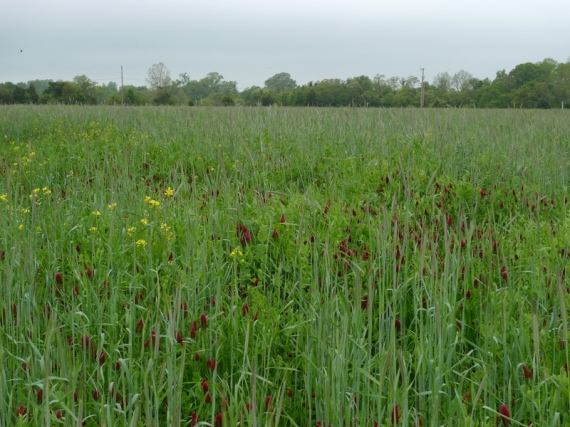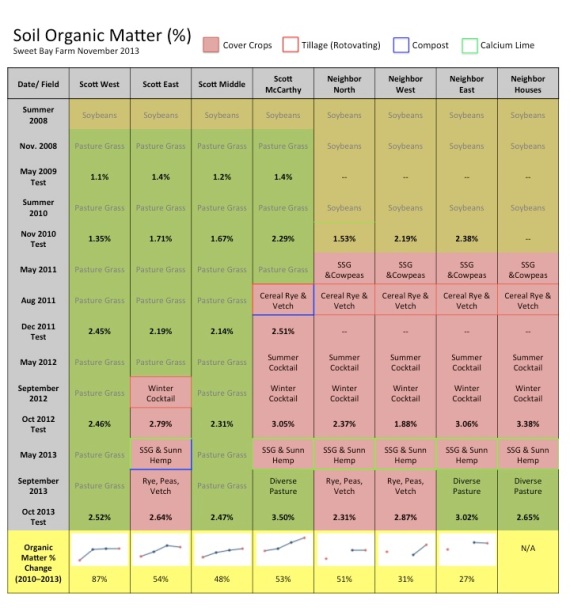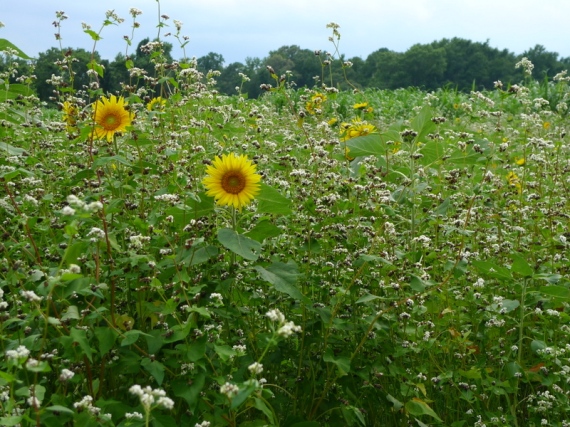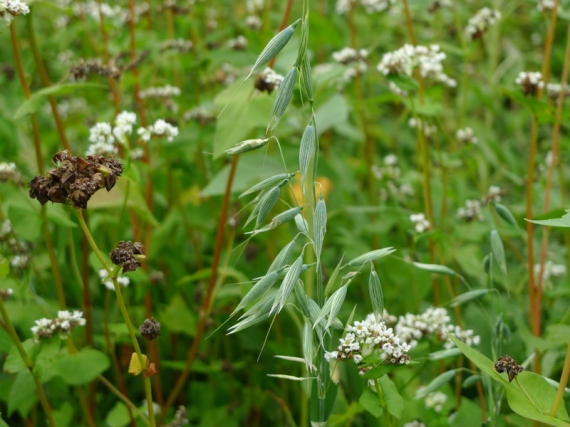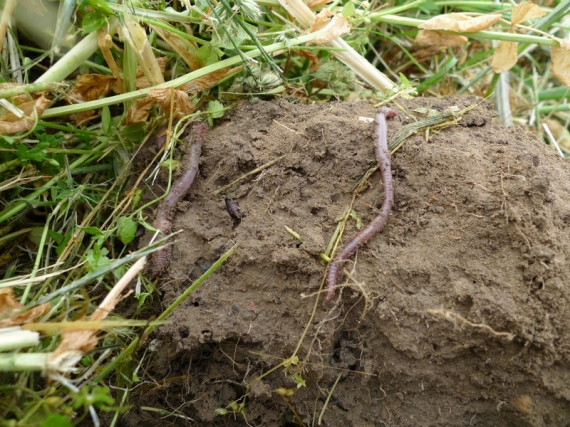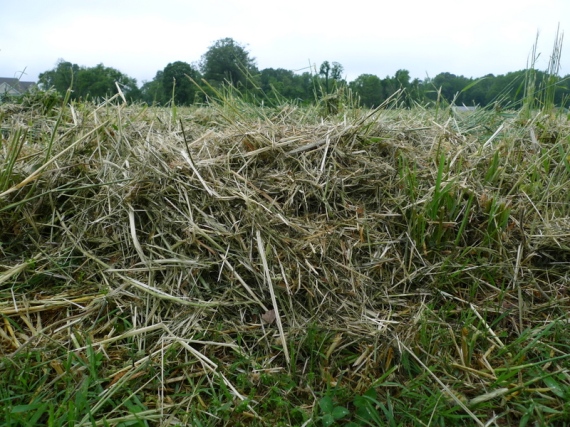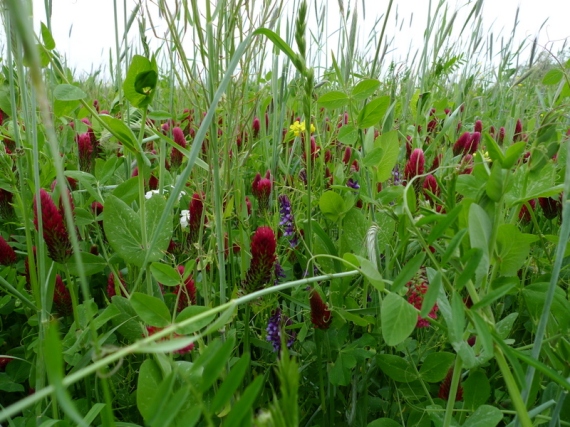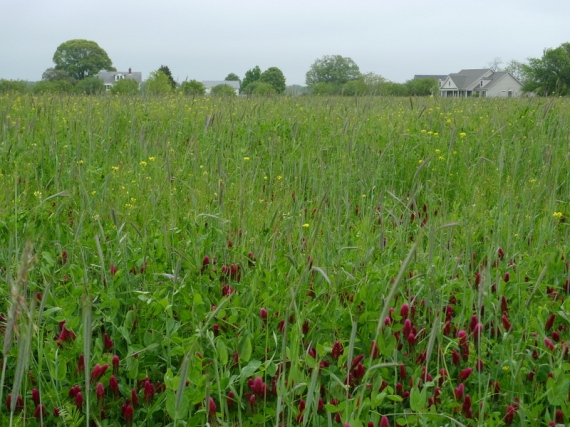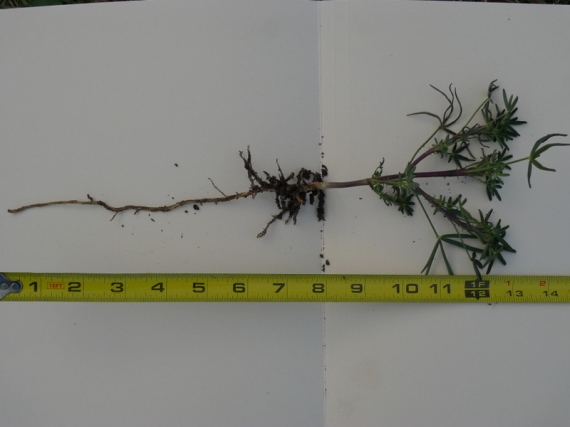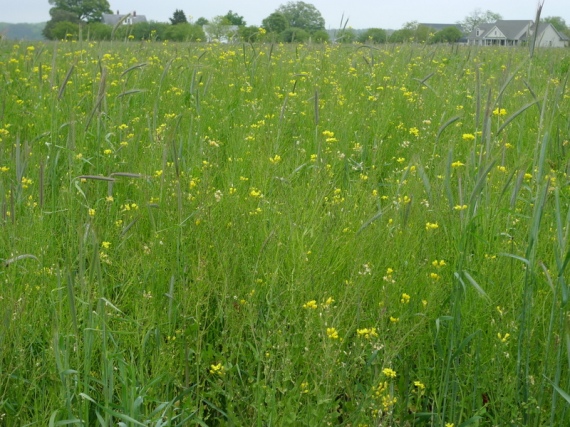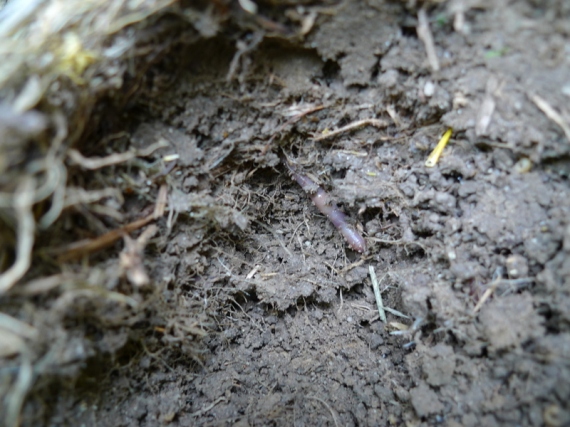Why is summer a fabulous time to build soil? Because the best cover crops for restoring soil love hot weather! Summer plants, like sorghum sudangrass and sunn hemp, grow giant-like very rapidly and contribute tons (literally) of plant biomass and root mass to the soil. Winter cover crops will always be extremely important, but they’ll never match the biomass-generating potential of sorghum sudangrass and sunn hemp.
Sunn Hemp and Sorghum Sudangrass
Sunn hemp is a tropical legume that contributes organic matter to the soil, produces nitrogen, and grows well in low-fertility soils (perfect for our degraded farm soil). And according to the SARE cover crop guide, sorghum sudangrass is “unrivaled for adding organic matter to worn-out soils”. Exactly what we need! Both sunn hemp and sorghum sudangrass have the potential to produce 5,000 pounds of biomass per acre, so it’s safe to assume this cover crop grew at least 2 tons of biomass per acre for us.

Healthy 6-ft tall sunn hemp and sorghum sudangrass on July 31, 2013. Planted on June 1st.
Giant Cover Crops Provide Giant Benefits
Growing carbon-rich summer biomass is so central to soil restoration because carbon is usually the primary limiting factor of degraded farm soil. When the hugely tall plants get mowed down, all that high-carbon, coarse mulch protects the soil surface and stimulates a wide array of beneficial life to set up shop and do their soil-service jobs. Soil bugs eat the mulch and poop out nutrient-loaded pellets (free bio-activated fertilizer). Earthworms and other critters distribute the mulch through the soil profile, which transforms into much sought-after soil organic matter.
And the roots! The roots are just as crucial, maybe more so. During the growing season, roots leak sugary photosynthesis products (exudates) into the soil to stimulate beneficial soil life. These sugary (carbon) exudates work their way through the soil life food chain and eventually become soil organic matter. And when a cover crop grows 12 feet tall, the roots likely go down 12 feet, pumping carbon into the entire soil profile and sucking up calcium, nitrogen, and other nutrients that had leached out of our very sandy topsoil. These nutrients end up in the plant biomass, which is now back on the soil surface and getting munched into new, top quality topsoil by soil critters. These are just a few of the many benefits provided by a 14-week summer cover crop!
How We Managed
Planting: We purchased Cover Crop Solution’s Homestead mix and planted it in early June on our worst fields, Scott east and neighbor west. Seeding rate was 15 lbs per acre. (Our best fields got a different summer cover crop and then were planted to a perennial pasture mix in August.)
Growing: By the end of July, the cover crop was 6 to 8 feet tall and green and lush. The previous cover crop was our legume-heavy winter cocktail, so the sorghum sudan was probably loving all the nitrogen the winter legumes pumped into the soil before they died in late May. By mid-September, the sorghum sudan was up to 12 feet tall in places.
Mowing: We didn’t mow until very late, September 21st. Mowing in early August is a good idea for stimulating more root growth and making the end-of-summer management a lot easier (see pg 108 SARE cover crop guide). But, we chose to do only one late mowing because of laziness and weed suppression. In our ongoing no-till cover cropping scheme, we haven’t used any herbicides, and weeds have become a problem. So we wanted to leave the cover crop tall and thick for as long as possible to shade out and suppress weeds.
Busting the sorghum sudan down to the ground required two mowings: a first rough cut with the bush hog in the highest position, and a 2nd finishing cut with bush hog in lowest position. If you do this, watch out for thick sorghum sudan canes ripping off tractor wires during the 2nd cut!
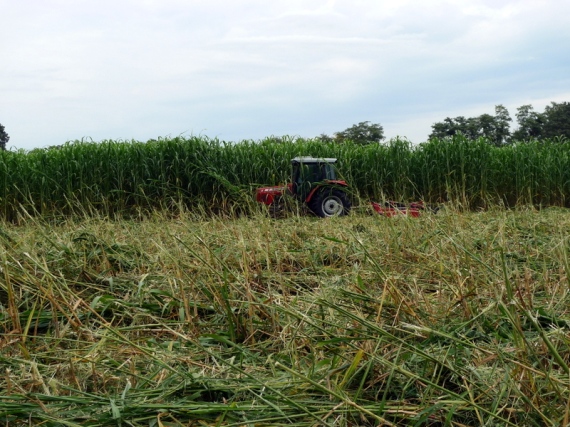
Mowing 12-ft tall jungle forest of sorghum sudangrass and sunn hemp on September 21, 2013. Pic taken during 1st rough cut with bush hog in highest position. Look at all that mulch!
Next Cover Crop: We planted a winter cover crop of cereal rye, peas, and vetch on October 5th. We rented our county’s no-till drill for planting. The drill can slice through the thick sorghum-sudan mulch and set the new seed into the soil.
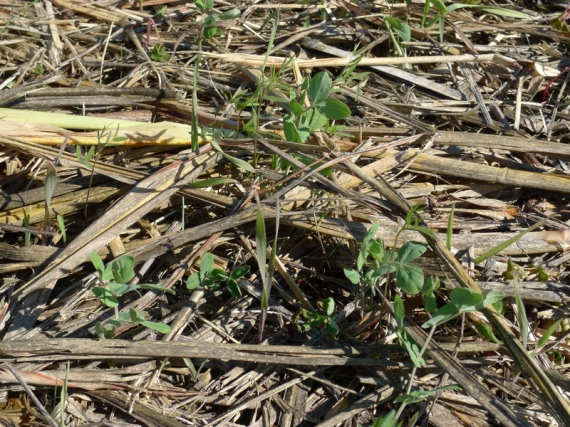
Cereal rye, hairy vetch, austrian winter pea seedlings coming up through sorghum sudan & sunn hemp mulch on October 24, 2013. Planted on October 5th.
With constant signs of depleted soil all around us on our farm, soil improvement is always on our minds. So it feels very good knowing we’re headed into winter with thick protective mulch on our fields and a nice new winter cover crop growing up through it. Thanks for reading!
 Jill Clapperton: “With a diverse cover crop all roots are crossing over below the soil surface touching each other and they are sharing things. If the crop combination is compatible they are sharing nutrients and water. That is probably why a mixed species stand survives and does so much better than a single species stand.”
Jill Clapperton: “With a diverse cover crop all roots are crossing over below the soil surface touching each other and they are sharing things. If the crop combination is compatible they are sharing nutrients and water. That is probably why a mixed species stand survives and does so much better than a single species stand.”
